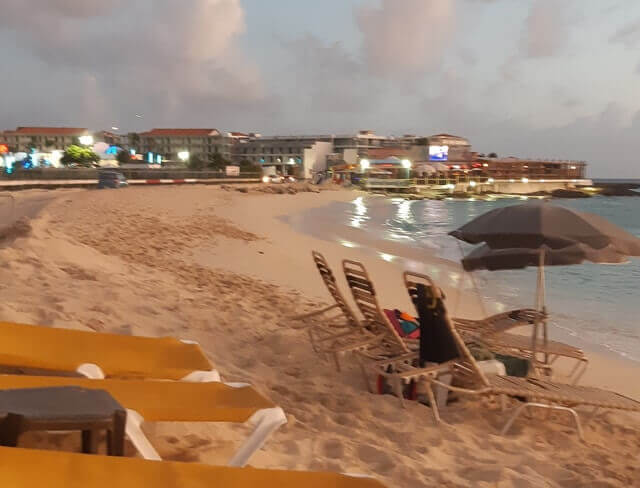Does Sint Maarten Have Floods? Learn About Flood Risks.
Sint Maarten, a Caribbean island located in the northeastern Caribbean Sea, is prone to floods, particularly during the rainy season. Being a low-lying island, it is highly susceptible to flooding caused by heavy rainfall, storm surges, and tidal waves.
The island’s unique geography, with rugged hills and narrow valleys, exacerbates the issue, causing water to accumulate quickly and flow rapidly downhill, often leading to flash floods.
In this article, we will explore the flood risks faced by Sint Maarten, examine past instances of flooding, and discuss measures taken to prevent and control floods. We will also look at the role of infrastructure and government initiatives in flood management while assessing the impact of floods on the island.
Read on to learn more about the flood risks in Sint Maarten and how the community is working to mitigate them.
Table of Contents
- 1 Key Takeaways
- 2 Does Sint Maarten Have Floods
- 3 Understanding Sint Maarten’s Flood Risks
- 4 A Brief History of Flooding in Sint Maarten
- 5 Flood Prevention and Control Measures in Sint Maarten
- 6 Emergency Preparedness for Floods in Sint Maarten
- 7 Assessing Flood Damage in Sint Maarten
- 8 Managing Floods in Sint Maarten: Government Initiatives
- 9 Community Efforts in Flood Management
- 10 The Role of Infrastructure in Flood Control
- 11 Environmental Factors and Flood Risks
- 12 Future Challenges and Strategies
- 13 Conclusion
- 14 Frequently Asked Questions about Floods in Sint Maarten
- 14.1 Q: Does Sint Maarten experience frequent flooding?
- 14.2 Q: What are the main causes of floods in Sint Maarten?
- 14.3 Q: How can I protect my property from flood damage?
- 14.4 Q: What should I do in case of a flood emergency?
- 14.5 Q: What is the government’s role in flood management?
- 14.6 Q: How can I get involved in flood management efforts?
- 14.7 Q: What can be done to reduce the impact of floods on the environment?
- 15 Author
Key Takeaways
- Sint Maarten is prone to floods due to its geographic location.
- Tropical storms and hurricanes contribute to flooding.
- Flash floods can occur during heavy rainfall.
- Preparedness and efficient drainage systems are crucial for managing flood risks.

Does Sint Maarten Have Floods
Yes, Sint Maarten experiences floods due to its geographical location and susceptibility to tropical storms and hurricanes. Heavy rainfall can cause flash floods in low-lying areas. Proper preparedness, drainage systems, and disaster management are essential to mitigate flood risks.
Understanding Sint Maarten’s Flood Risks
Sint Maarten is a small Caribbean island that faces the threat of flooding from various sources. The island is vulnerable to flooding due to its topography, heavy rainfall during hurricane season, and rising sea levels.
The Topography of Sint Maarten
The terrain of Sint Maarten is mountainous, with steep hills and valleys that can channel water during heavy rainfall. The island is prone to flash floods, which can cause significant damage to properties and infrastructure.
Rainfall and Hurricanes
Sint Maarten experiences heavy rainfall during the hurricane season, which lasts from June to November. Hurricanes can bring in substantial amounts of rainfall, leading to flash floods, landslides, and mudflows.
The island has experienced several severe hurricanes that have caused significant damage in the past, including Hurricane Irma in 2017.
Rising Sea Levels
The sea level around Sint Maarten has been rising due to global warming, which increases the risk of flooding from storm surges. Rising sea levels can also lead to saltwater intrusion and erosion of coastal areas, which can cause damage to properties and infrastructure.
Overall, Sint Maarten faces multiple flood risks that require proactive measures to prevent and mitigate their effects. The following sections will discuss the history of flooding in Sint Maarten, flood prevention and control measures, emergency preparedness, the role of infrastructure, and future challenges.
A Brief History of Flooding in Sint Maarten
Sint Maarten has a long history of dealing with floods caused by heavy rains and hurricanes. The island’s low-lying areas and proximity to the sea make it highly vulnerable to flooding. Over the years, floods have caused significant damage to infrastructure, homes, and businesses, affecting the livelihoods of many residents.
The first recorded instance of flash flooding in Sint Maarten dates back to 1963, when a tropical storm caused severe damage to the island’s infrastructure and left many residents homeless. Since then, several hurricanes and storms have hit the island, causing widespread flooding and damage.
Hurricane Luis and Hurricane Irma
In 1995, Hurricane Luis hit Sint Maarten, causing extensive flooding and damage to the island’s infrastructure, including roads, bridges, and buildings. The hurricane caused several fatalities and left many residents without power or access to basic necessities.
In 2017, Hurricane Irma, one of the most powerful hurricanes in recorded history, devastated Sint Maarten, causing significant damage to homes, businesses, and infrastructure. The hurricane caused widespread flooding, leaving many residents stranded and without access to clean water and food supplies.
Impact on the Community
The impact of flooding on the community in Sint Maarten cannot be overstated. Flooding has caused significant economic losses and hardship for many residents, particularly those who live in low-lying areas. The effects of flooding on housing, infrastructure, and public health are also significant, with floods often leading to property damage, displacement, and the spread of water-borne illnesses.
Despite the challenges posed by flooding, the people of Sint Maarten have shown commendable resilience and determination to rebuild their communities in the aftermath of such disasters. Through community efforts and government initiatives, the island has made significant progress in improving its resilience to floods and other natural disasters.

Flood Prevention and Control Measures in Sint Maarten
Sint Maarten, like many other low-lying areas, is vulnerable to flooding. The government has implemented several measures to help prevent and control floods in the region.
| Measure | Description |
|---|---|
| Dredging | The process of removing sediment buildup from waterways, which can increase their capacity to carry water and reduce the risk of flooding. |
| Building and maintaining drainage systems | Efficient drainage systems can prevent water from accumulating in low-lying areas, reducing the impact of flooding. |
| Building sea walls and barriers | These structures are designed to protect coastal areas from storm surges and other severe weather events, reducing the damage caused by flooding. |
| Implementing zoning and land use regulations | Effective land use regulations can prevent development in areas that are particularly vulnerable to flooding, reducing the risk of damage caused by severe floods. |
It is important to note that while these measures can help reduce the impact of flooding, they cannot completely eliminate the risk. It is essential for residents and visitors to Sint Maarten to remain vigilant and prepared in the event of a flood.
Flood Prevention and Control Measures in Sint Maarten:
The government of Sint Maarten has taken proactive steps to mitigate the impact of floods and reduce the risk of flooding. Following the devastation caused by Hurricane Irma in 2017, the government has allocated significant resources to improving the island’s flood control infrastructure. One of the most significant steps taken was the building of a new drainage system in the capital city, Philipsburg. This system has greatly improved the area’s ability to manage excess water and reduced the risk of severe flooding.
“We’ve learned some harsh lessons from past floods, and we’re doing everything we can to prevent similar disasters from happening in the future,” says Sint Maarten Prime Minister Silveria Jacobs.
Other measures taken by the government include the implementation of strict zoning regulations to prevent development in areas that are prone to flooding. Additionally, the government has built new seawalls and barriers in coastal areas to protect against storm surges and other severe weather events.
Despite these measures, the government recognizes that it cannot prevent all floods from occurring in Sint Maarten. To that end, they have developed an emergency response plan to ensure that residents and visitors are prepared in the event of a flood. The plan includes designated evacuation routes, emergency shelters, and a system for alerting residents of impending floods.
Emergency Preparedness for Floods in Sint Maarten
Flooding can occur unexpectedly, leaving devastating effects on homes and communities. For this reason, it is essential to have emergency preparedness plans in place to minimize the impact of floods. Sint Maarten has experienced severe flooding in the past, and the government and community members have taken measures to prepare for future flood events.
Creating an Emergency Kit
It is important to have an emergency kit ready in case of a flood or any other natural disaster. An emergency kit should include non-perishable food, water, batteries, flashlights, a first aid kit, important documents, and any necessary medications. Keep the kit in a waterproof container and store it in a high place, such as on a shelf or in an attic.
Developing an Evacuation Plan
In the event of a flood, it is essential to have a plan for evacuation. This should include identifying safe routes and a meeting place outside of the affected area. Make sure to review and practice the evacuation plan with all family members, so everyone knows what to do in case of an emergency. If evacuation is not possible, identify a safe location within the home to take shelter.
Staying Informed
During a flood, it is crucial to stay informed about the situation. Listen for updates and instructions from local authorities, and stay tuned to local news and weather channels. It is also recommended to have a battery-powered radio on hand to receive updates if power is lost.
Assisting Vulnerable Populations
During a flood, some individuals may require additional assistance, such as the elderly, children, or those with disabilities. It is important to identify these individuals and have a plan in place to assist them in case of an emergency. This may include helping them evacuate or providing necessary supplies and medications.
By taking these emergency preparedness measures, individuals and communities in Sint Maarten can mitigate the impact of floods and remain safe during natural disasters.

Assessing Flood Damage in Sint Maarten
Sint Maarten has experienced several instances of flooding over the years, resulting in significant damage to property and infrastructure. The island’s susceptibility to flooding is largely due to its low elevation, steep terrain, and location in the hurricane belt.
The most recent major flooding occurred in September 2017 when Hurricane Irma hit the island. The storm caused extensive damage to buildings, roads, and other facilities, leaving the island without power and clean water for several days. The total cost of the damage was estimated to be around $1.4 billion.
In addition to the direct costs of repairing and replacing damaged infrastructure, flooding can also have other economic impacts. For example, it can disrupt business operations and cause a decline in tourism, which is a major source of revenue for Sint Maarten.
Response to Flood Damage
Following a flood event, the government of Sint Maarten typically conducts assessments of the damage and determines the appropriate response. This may involve providing financial assistance to affected individuals and businesses, repairing damaged infrastructure, and implementing measures to prevent future flooding.
For example, after Hurricane Irma, the government established a recovery fund to provide aid and support to those affected by the storm. The fund was used to repair public infrastructure, support small businesses, and provide housing assistance to residents who lost their homes.
Private insurance companies also play a significant role in responding to flood damage. Property owners are encouraged to purchase flood insurance to protect against the financial impacts of flooding.
Managing Floods in Sint Maarten: Government Initiatives
The government of Sint Maarten recognizes the importance of managing flood risks and has implemented several initiatives to mitigate their impact. Some notable government initiatives are:
| Initiative | Description |
|---|---|
| Flood Control and Prevention Plan | The government has developed a comprehensive plan to control flood risks, which includes the construction of drainage systems, dikes, and sea walls, among other measures. |
| National Emergency Management Organization (NEMO) | NEMO is responsible for coordinating emergency responses during natural disasters, including floods. The organization works closely with other government agencies and community organizations to ensure a rapid and effective response. |
| Building Code | The government has implemented a building code that sets out minimum standards for construction to ensure buildings are resistant to flood damage. The code also mandates the use of flood-resistant materials and requires buildings to be located in areas that are less prone to flooding. |
| Public Education Campaigns | The government conducts public education campaigns to raise awareness about flood risks and the importance of emergency preparedness. These campaigns encourage citizens to take preventive measures and to be prepared to evacuate if necessary. |
Overall, the government of Sint Maarten is taking an active role in managing flood risks, recognizing the potential impact on the island’s infrastructure, economy, and citizens. However, there is still much work to be done to ensure the safety and resilience of the island.
Community Efforts in Flood Management
In addition to government initiatives, the community in Sint Maarten plays a critical role in flood management. There are various community-led efforts aimed at fostering resilience and reducing the impact of floods.
Community Resilience Building
One of the most crucial community efforts towards flood management is resilience building. This involves preparing for floods by taking necessary measures to reduce their impact. Community resilience building includes:
- Conducting regular drills and exercises to test emergency response plans
- Conducting community awareness campaigns to educate people on flood risks and management techniques
- Encouraging communities to participate in flood prevention efforts, such as cleaning up drains and canals, and disposing of waste properly
Community-Based Early Warning System
Communities in Sint Maarten have developed their early warning system to complement the government’s efforts. The system comprises community members who are trained to monitor their local areas and to provide timely warning to others in case of an impending flood. The early warning system is an effective way to raise awareness of potential flood risks and to allow people to evacuate or prepare for the floods.
Community Support Programs
Community-led support programs aimed at assisting those affected by floods play a significant role in flood management. Programs such as relief organizations and community emergency response groups offer support to flood victims, including food and shelter. These support programs are often critical in helping people deal with the aftermath of floods and getting back on their feet.
The community-led flood management efforts in Sint Maarten are vital in fostering resilience and reducing the impact of floods. A strong partnership between the government and the community is crucial in tackling the flood risks faced by the island effectively.

The Role of Infrastructure in Flood Control
Infrastructure has a crucial role to play in reducing the risk of flooding in Sint Maarten. The island has invested in several measures to strengthen its infrastructure and improve its flood control capabilities.
One of the most important infrastructure investments is the construction of drainage systems. This includes the installation of stormwater drains and collection systems to channel excess water away from areas at risk of flooding. These systems are designed to prevent flooding during heavy rainfall and storms, protecting both people and property.
In addition to drainage systems, Sint Maarten has also built several floodwalls and embankments to prevent water from overflowing into residential and commercial areas. These walls and barriers act as a physical barrier against rising water levels, minimizing the impact of flooding.
Sint Maarten has also invested in the construction of retention basins and reservoirs to store excess water during heavy rainfall. These storage facilities are designed to reduce the pressure on drainage systems, ensuring that they can operate effectively during periods of heavy rainfall and storms.
| Infrastructure Measures for Flood Control | Description |
|---|---|
| Drainage Systems | Installation of stormwater drains and collection systems to channel excess water away from areas at risk of flooding. |
| Floodwalls and Embankments | Construction of physical barriers against rising water levels to minimize the impact of flooding. |
| Retention Basins and Reservoirs | Construction of storage facilities to reduce the pressure on drainage systems during periods of heavy rainfall and storms. |
“Investing in infrastructure is crucial for Sint Maarten to minimize the impact of floods, protect its residents and businesses, and ensure the sustainability of the island’s economic growth.”
Furthermore, Sint Maarten has implemented regulations to ensure that all new infrastructure is designed and built to withstand potential flooding and other natural disasters. These regulations are aimed at minimizing the damage caused by floods and ensuring the long-term resilience of the island’s infrastructure.
The government of Sint Maarten continues to invest in infrastructure and implement measures to enhance flood control capabilities. The island’s commitment to building a resilient infrastructure is critical in ensuring the safety of its citizens and the continued growth of its economy.
Environmental Factors and Flood Risks
Several environmental factors contribute to flood risks in Sint Maarten. The island is in the midst of the hurricane belt, with a tropical climate and rainy seasons from May to November each year. These conditions make the area susceptible to floods.
The geography and topography of Sint Maarten also play a crucial role. The island is relatively small, with hills and mountains, which increases the possibility of flash floods and landslides. Poor land use practices, such as deforestation, further exacerbate the problem. Without trees and vegetation to absorb rainwater, it rushes to the lowest point, causing floods.
Human activities, including coastal development and urbanization, also contribute to flood risks. Paving over natural surfaces, such as wetlands, reduces the amount of land available to absorb rainwater, leading to more flooding. Additionally, the construction of buildings and infrastructure can interfere with natural waterways and drainage systems, amplifying the risk of floods.
Climate change is another factor that is expected to increase flood risks in Sint Maarten. Higher temperatures and more frequent and severe weather events, such as hurricanes and storms, may lead to more flooding in the future.
Overall, Sint Maarten’s flood risks are a complex result of several environmental factors and human activities. Addressing these risks will require a multifaceted approach, including environmental preservation, infrastructure development, and emergency preparedness.
Future Challenges and Strategies
Sint Maarten faces several challenges concerning flood risks in the future. These challenges include:
- Increase in climate change effects, such as sea level rise, more intense storms, and heavier rainfall.
- Rapid urbanization and development that can obstruct natural drainage ways.
- Aging infrastructure that may not be able to handle increased water flow.
To address these challenges, Sint Maarten can implement several strategies:
- Investing in upgraded infrastructure: The government can invest in upgrading existing infrastructure, such as drainage systems, canals, and pumping stations, to better handle increased water flow.
- Encouraging sustainable development practices: The government can encourage sustainable development practices that do not obstruct natural drainage ways, such as green roofs, permeable pavements, and rain gardens.
- Enhancing emergency preparedness: The government can enhance emergency preparedness measures, such as flood warning systems, evacuation plans, and community outreach programs.
- Implementing nature-based solutions: The government can implement nature-based solutions, such as wetland restoration, mangrove planting, and coastal dune management, to reduce flood risks and enhance coastal resilience.
Effective implementation of these strategies requires collaborative efforts between the government, private sector, and community. By working together, Sint Maarten can mitigate future flood risks and adapt to the changing climate.
Conclusion
Sint Maarten faces the challenge of recurring floods, necessitating a proactive approach to disaster preparedness and mitigation. By prioritizing proper infrastructure and response strategies, the island can minimize the impact of floods and protect its residents and environment.

Frequently Asked Questions about Floods in Sint Maarten
Here are some common questions and answers related to floods in Sint Maarten:
Q: Does Sint Maarten experience frequent flooding?
A: Sint Maarten is prone to flooding due to its location in the hurricane belt and its low-lying terrain. Floods can occur during heavy rainfall and storm surges.
Q: What are the main causes of floods in Sint Maarten?
A: The main causes of floods in Sint Maarten are heavy rainfall, storm surges, and inadequate drainage systems. Coastal erosion and sea level rise due to climate change can also contribute to flood risks.
Q: How can I protect my property from flood damage?
A: You can protect your property from flood damage by elevating it above flood levels, installing flood barriers and seals, and ensuring proper drainage around your property. It is also recommended to have flood insurance to cover any damages.
Q: What should I do in case of a flood emergency?
A: In case of a flood emergency, you should immediately move to higher ground and avoid walking or driving through flood waters. Stay informed about the latest weather updates and follow instructions from local authorities. Have a disaster kit ready with essential supplies and important documents.
Q: What is the government’s role in flood management?
A: The government of Sint Maarten plays a crucial role in flood management by implementing flood prevention and control measures, such as building sea walls, improving drainage systems, and enforcing building codes. The government also provides emergency response and relief during flood events.
Q: How can I get involved in flood management efforts?
A: You can get involved in flood management efforts by participating in community-based initiatives, such as clean-up campaigns and disaster preparedness drills. You can also join local organizations that focus on environmental conservation and climate change resilience.
Q: What can be done to reduce the impact of floods on the environment?
A: To reduce the impact of floods on the environment, it is important to implement sustainable land use practices, such as preserving wetlands and reducing deforestation. It is also crucial to promote green infrastructure, such as rain gardens and green roofs, which can absorb and filter rainfall.


